Abstract
Purpose: management of operations at IKEA UAE.
Efficient management of resources and activities to achieve set goals.
Transform inputs to intended outputs needs:
- Materials.
- Decisions.
- Responsibilities.
- Finances.
IKEA applies various tools of quality management.
The research design:
- A descriptive approach to different transformational processes
A discussion of the findings shows effectiveness in:
- Application of quality control systems.
- Flat packing.
- Layout.
- Strategic location.
- Stylish design of its products.
IKEA’s autocratic leadership style:
- A threat to strategic and operational plans sustainability.
Recommendations:
- Shift to a democratic leadership.
- Engage employees in operation decisions.
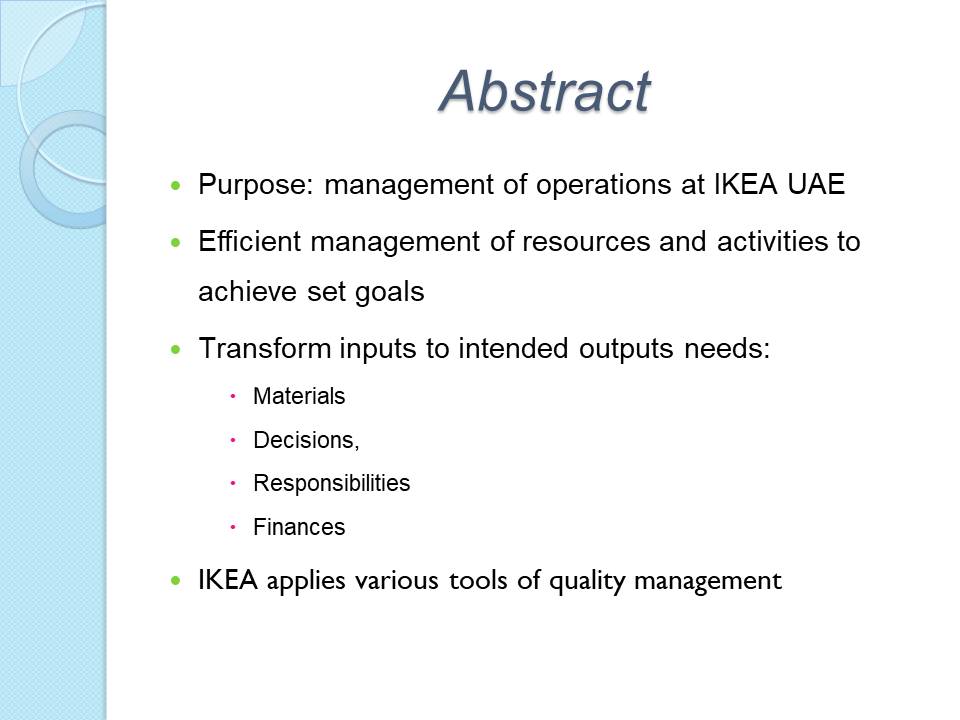
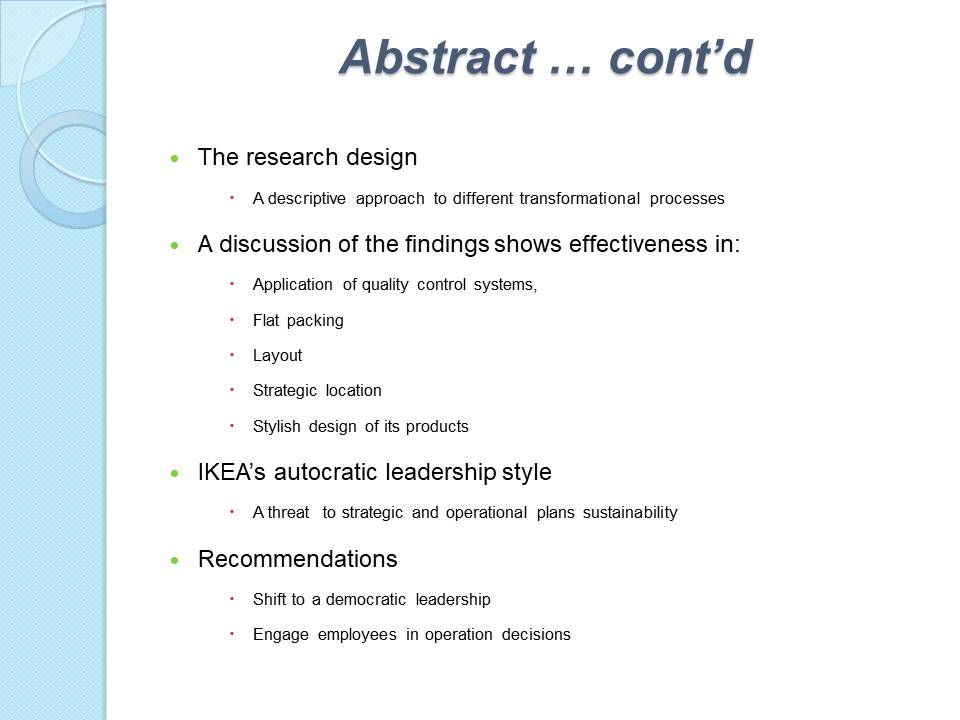
Introduction
A focus on IKEA UAE:
- A Swedish firm renowned for furniture globally.
- Established in 1943 by Ingvar Kamprad.
- Now in 38 countries.
Operation management (OM) encompasses:
- Decisions.
- Activities.
- Responsibilities of managing the resources.
IKEA’s vision:
- “to provide a broad range of home furnishing products that are functional and well-designed”.
IKEA manages operations:
- 1300 direct suppliers from Sweden.
Rationale for investigating IKEA OM:
- Has various well-managed processes that foster its growth.
- Equity and economy for high-quality furniture products and services.

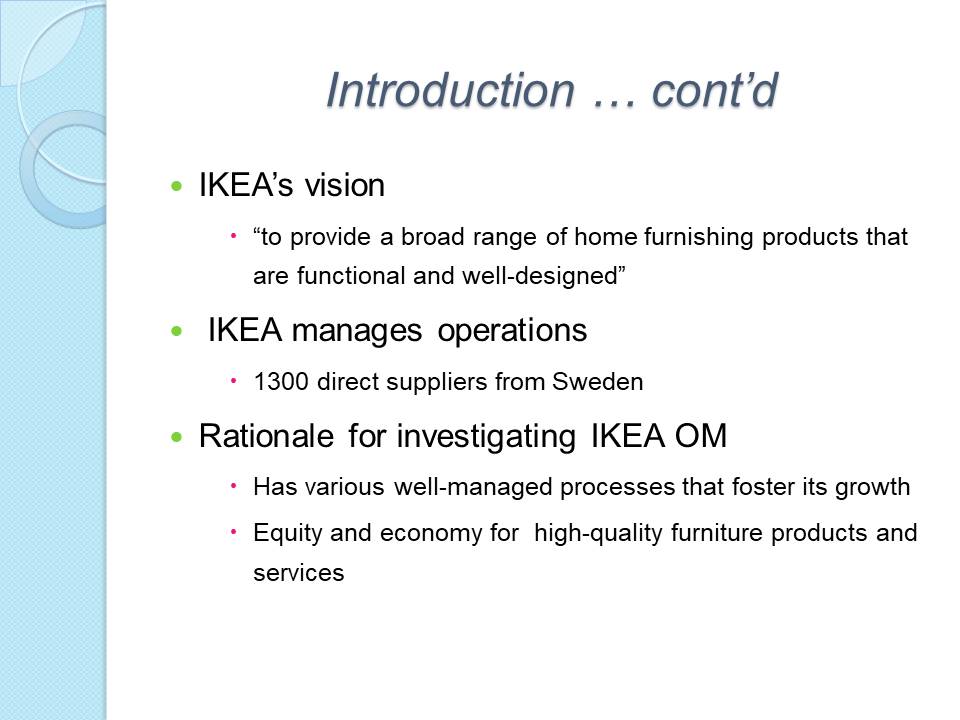
Topic Statement
To analyze how IKEA applies the concepts of operation management to achieve its vision.
Basis of the research:
- All the significant transformational processes for inputs to outputs.
The context of the research:
- Materials planning.
- Expenditure management.
- Structural analysis.
- Equipment maintenance.
- Factory management, and other relevant operations.
Focus area:
- IKEA UAE.
Study usefulness:
- Understanding OM processes.
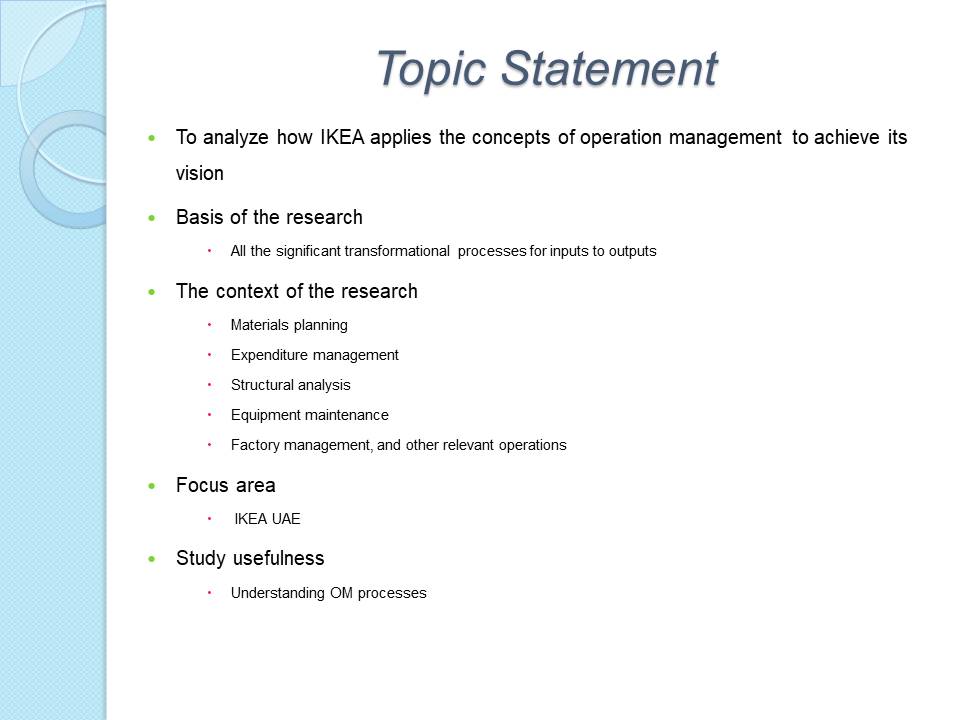
Methodology
Research design:
- Descriptive approach to illustrate how IKEA applies its OM strategies.
A case study on IKEA:
- Data collection on conduct of operations.
Data sources:
- Quality management and improvement tools such as the DMAIC tools.
Data analysis:
- Evaluation tools such as the Six Sigma and the DMAIC methodology.
- Qualitative because of managerial strategies.
The company’s application of these tools for transformation.
The use of OM concepts at IKEA
- Global presence to display a wide variety of furniture.
- Affordable prices.
- Six sigma impacts on company’s global activities.
Application of Six -Sigma at IKEA:
- A quality management tool for enhancing efficiency.
- Enhances the quality of products and processes.
- Reduces defects.
- Identifies and eliminates errors.
Implementation considers:
- Cost reduction.
- Profits maximization.
- Customer satisfaction.
- Impacts on environment.
Six Sigma tools allow:
- IKEA to use the DMAIC model in operations.
Methodology focuses on input to output transformation processes:
- Defining.
- Measuring.
- Analyzing.
- Improving.
- Controlling.
IKEA uses Six Sigma for internal process improvements e.g. online customer experiences.
Six Sigma grading IKEA employees as:
- Green belts.
- Yellow belts.
- Champions.
IKEA’s transformation process:
- Quality furniture items at affordable rates.
- Operation management to cut costs.
- Quality products for good relationships with suppliers.
- Streamlined logistics and supply chain.
- IKEA’s strategic location in the UAE.
- Large retail outlets for display and customer experiences.

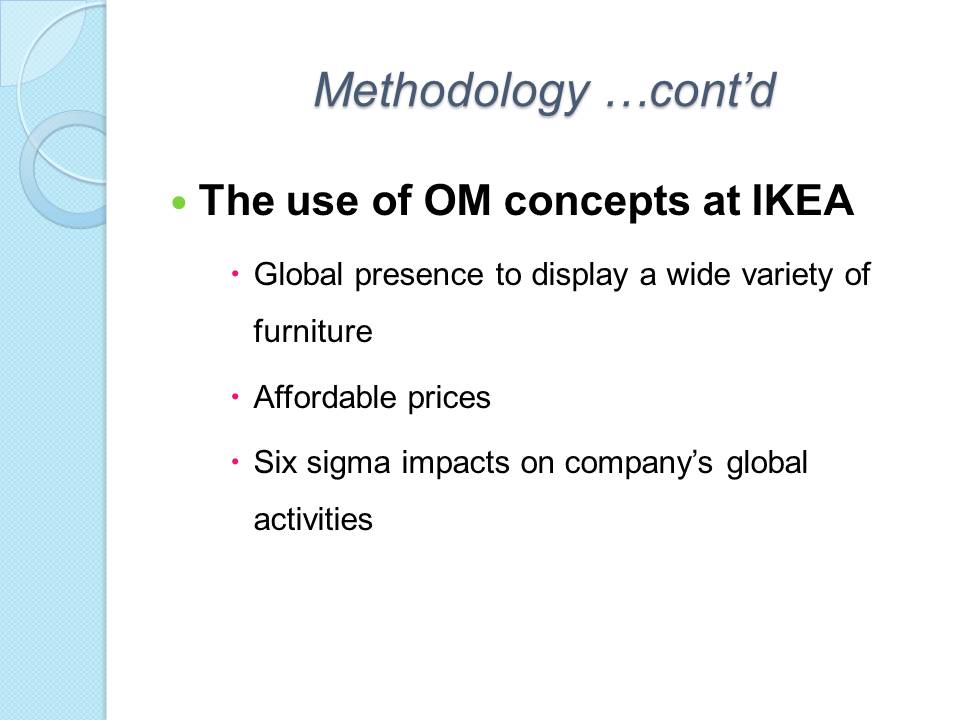


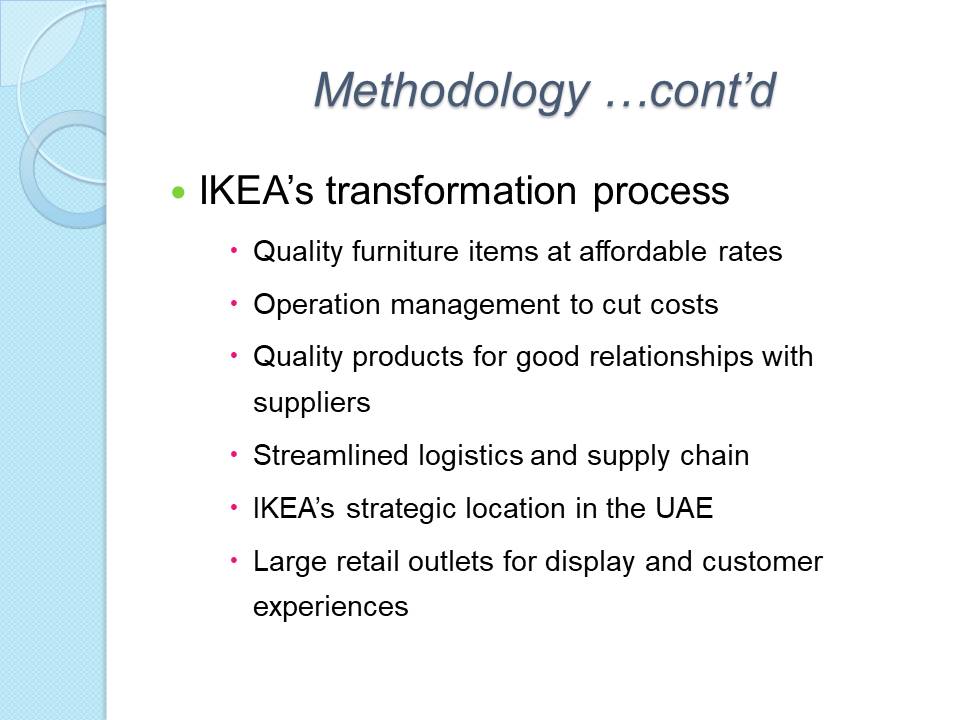

Results
- Operation managers at IKEA UAE follow the company’s vision in transformation processes.
- Competitive advantage achieved through high quality furniture at low costs.
- Best customer service for unique customer needs e.g. children play lounge.
- Works with subcontractors for production operations to reduce costs.
- Maintains a research base in Sweden to sustain quality standards.
- Suppliers must meet IKEA quality standards.
- Transformations focus on Scandinavian identity – use of natural wood and new materials of attractive colors supported with superior technology.
- Scandinavian identity creates competitive edge for IKEA.
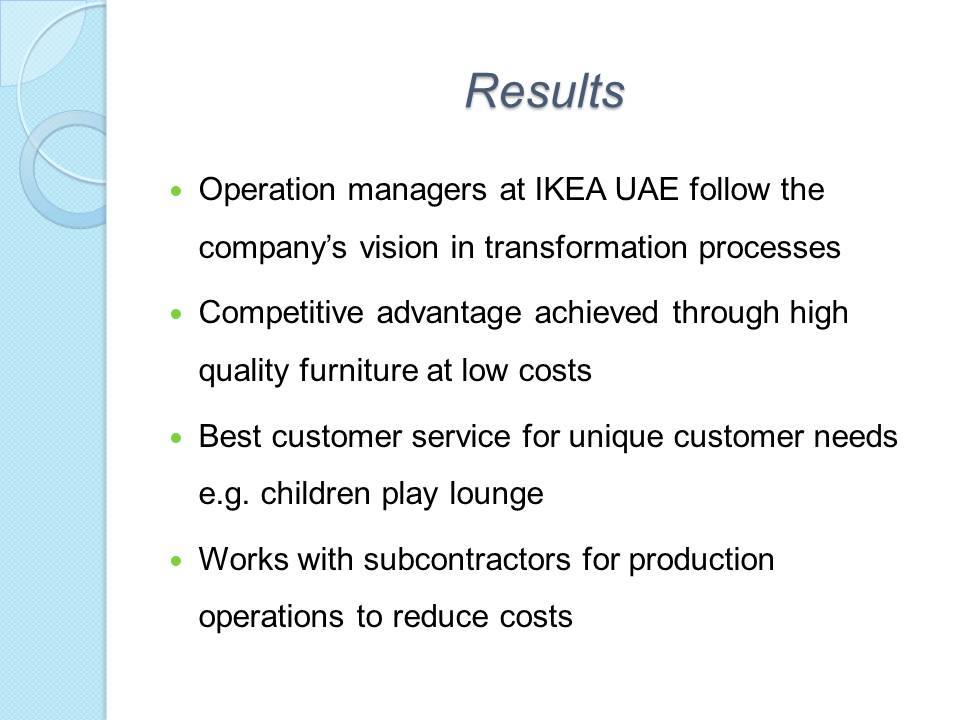
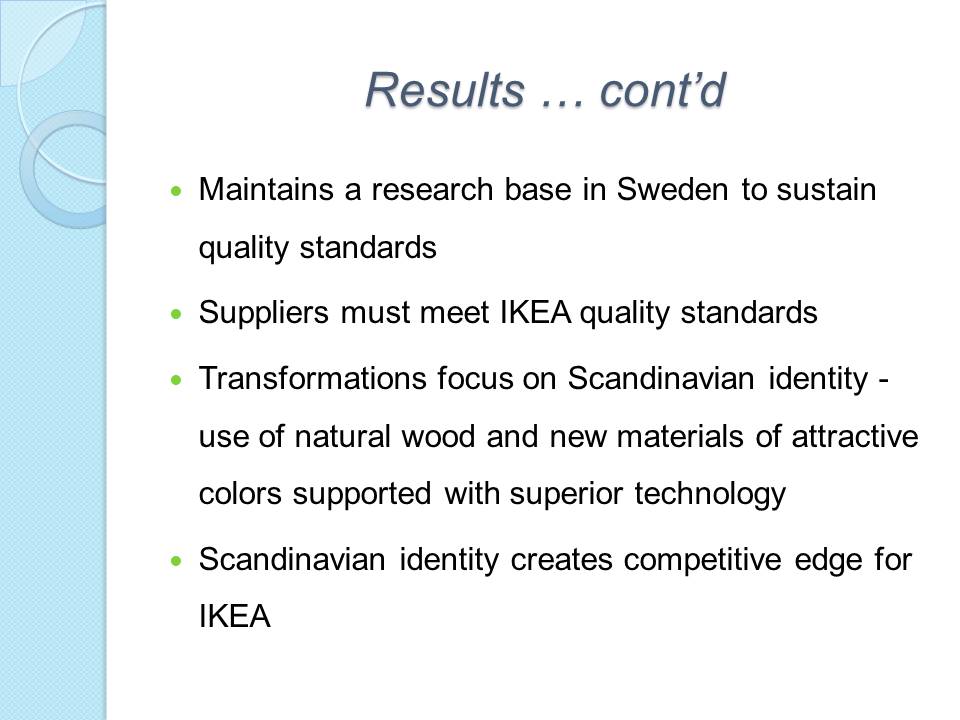
Discussions
- The Six Sigma metric leads to efficiency and low cost operation management processes.
- Minimized defective processes.
- Improved product quality.
- Distinctive products for diverse markets.
- The DMAIC methodology enhances efficiency at IKEA.
- The Six Sigma tool improves customer experiences and foster competitiveness.
- Embraced IT for online services.
- Transformational processes meet customers’ unique needs
- Suppliers from the region contracted to meet demands in IKEA UAE
- The Theory of Swift, Even Flow:
- Production operations are streamlined evenly and swiftly
- Processes focus on value addition
- Delays are eliminated
- Strong partnership with suppliers globally
- IKEA’s stores layout complements operations and excellent customer experiences and friendly to users
- IKEA’s priority:
- Promotes effectiveness and efficiency in operations management
- The application of OM strategies enhance efficiency in operation processes

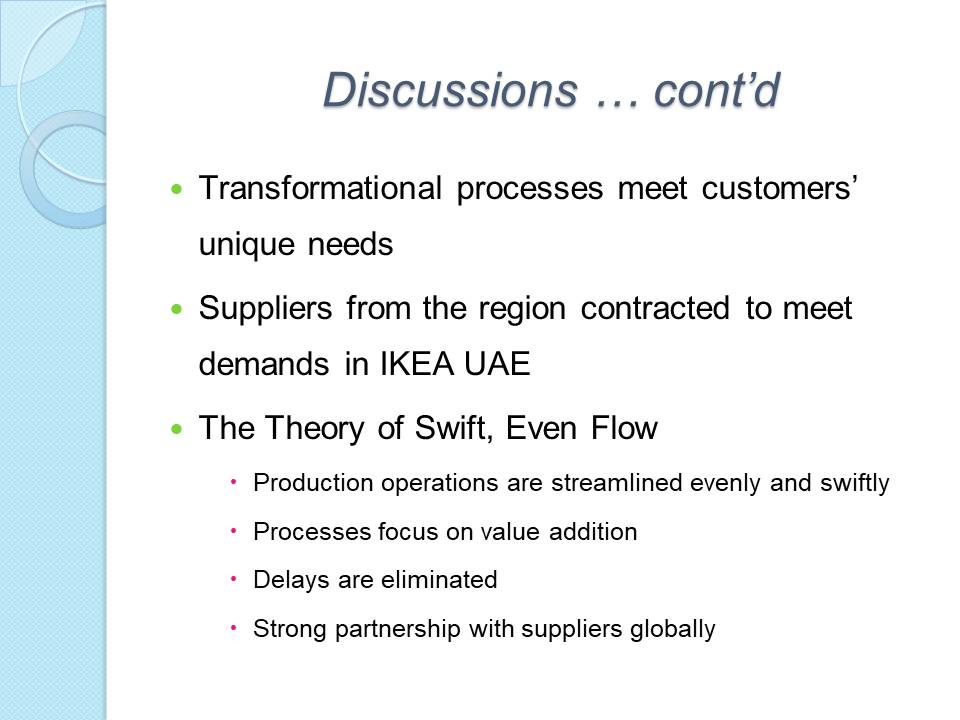
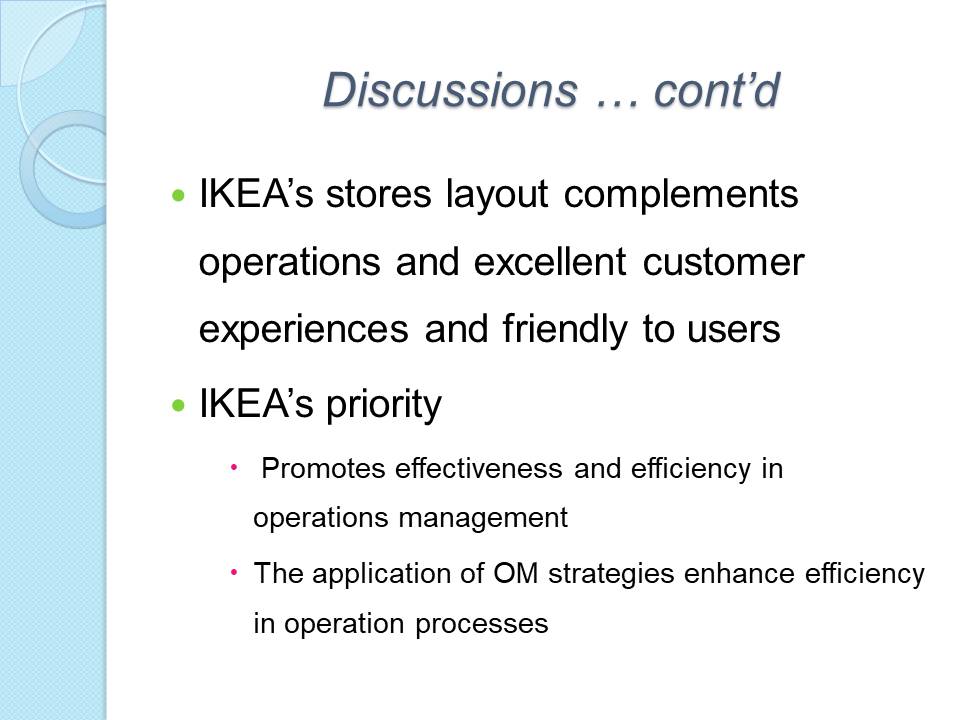
Recommendation
IKEA tends to use an autocratic style of leadership – style used by the founder, Kamprad:
- Leadership style is criticized.
- Negatively impacts employee morale.
- A threat to competitive edge.
Thus, IKEA needs to embrace a democratic style of leadership to enhance consultation and decision.
A rationalized improvement plan is required for leadership change.
Transformational processes will have positive impacts on leadership style.
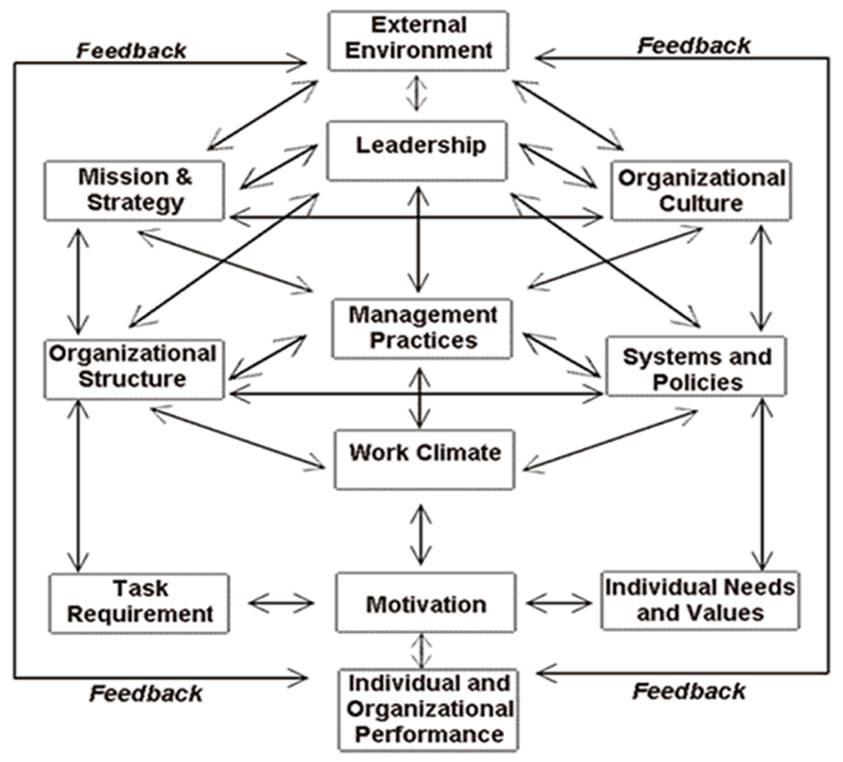
A democratic system of leadership:
- Improve employee motivation.
- Processes will change.
- Valuable insights.
- Make best decisions for operations.
- Improve quality of furniture and services.
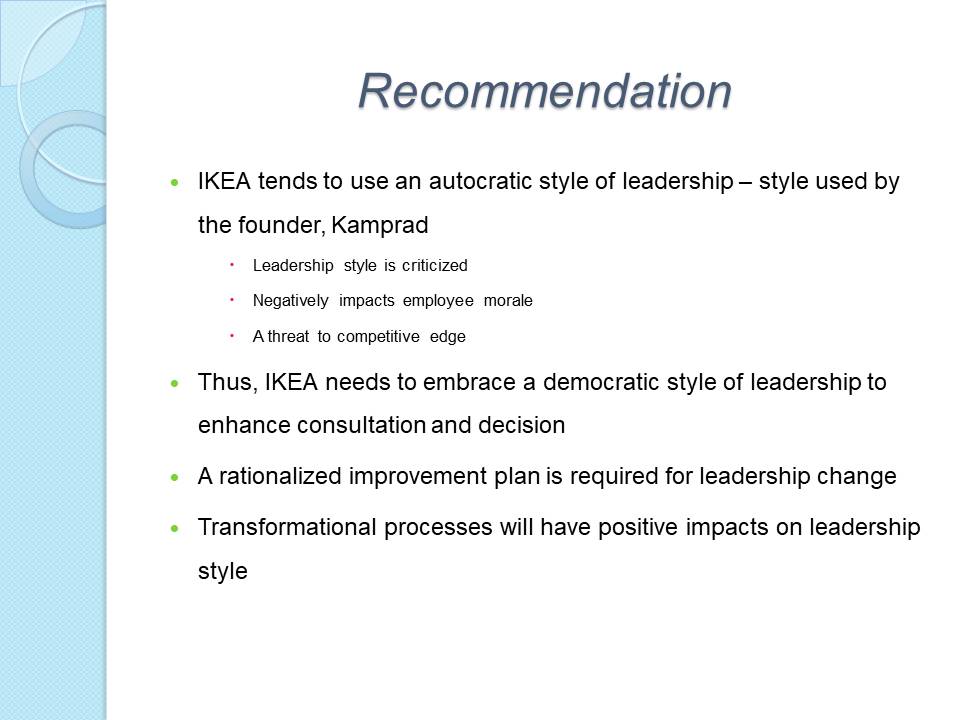
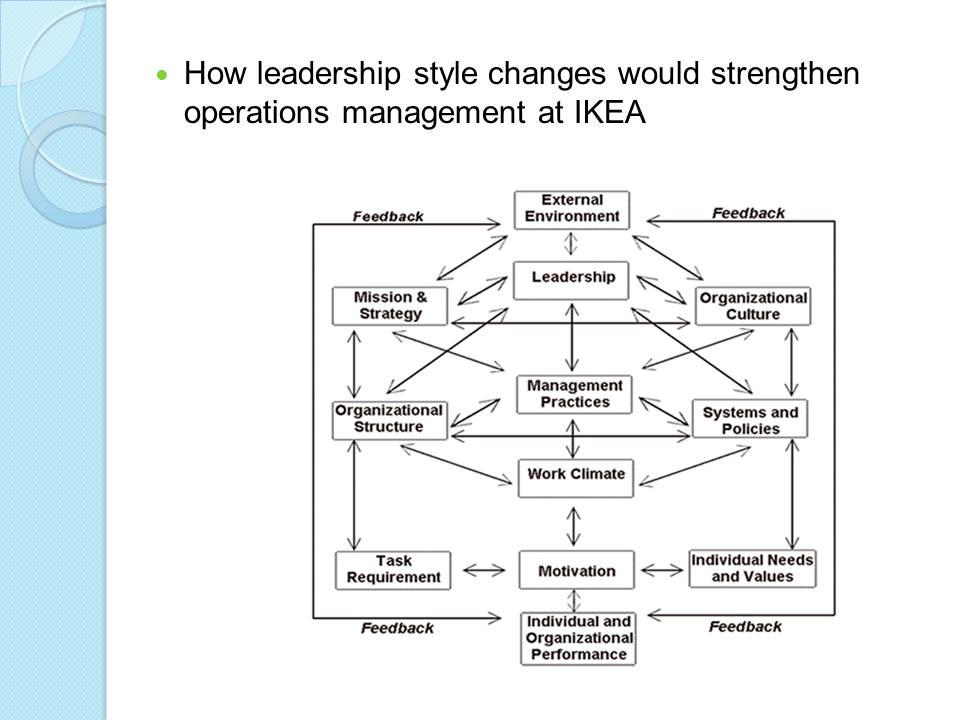

Conclusion
Operational management aims to transform organizational processes and inputs to outputs.
IKEA OM is efficient and effective.
OM supports quality products and low costs.
The Six Sigma methodology shows efficiency in:
- Cost-reduction.
- Contracting suppliers.
- Designing.
- Online presence.
Recommendation:
- Current authoritative leadership style should be changed to democratic style.
